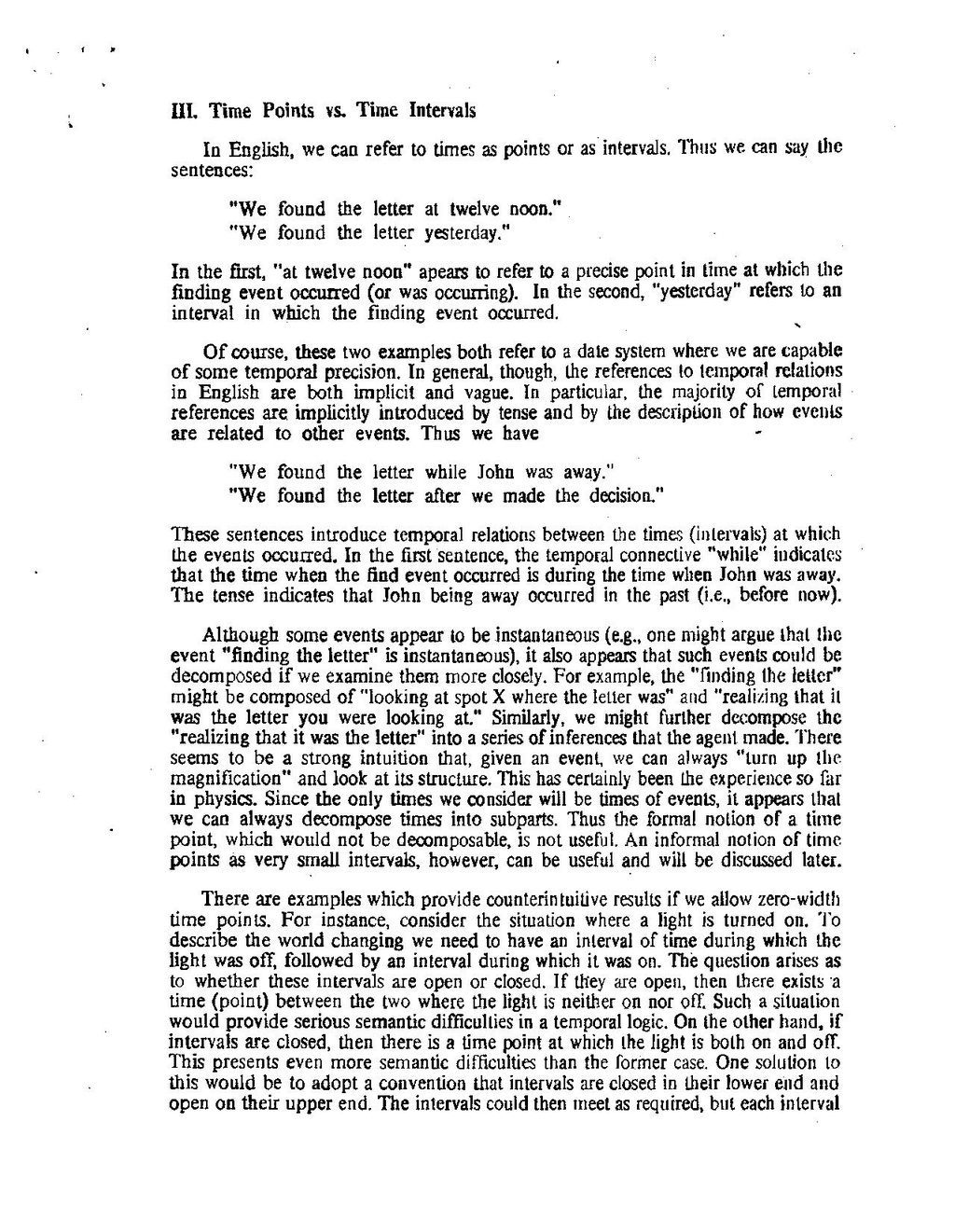III. Time Points vs. Time Intervals
In English, we can refer to times as points or as intervals. Thus we can say the sentences:
"We found the letter at twelve noon." "We found the letter yesterday."
In the first, "at twelve noon" apears to refer to a precise point in time at which the finding event occurred (or was occurring). In the second, "yesterday" refers to an interval in which the finding event occurred.
Of course, these two examples both refer to a dale system where we are capable of some temporal precision. In general, though, the references to temporal relations in English are both implicit and vague. In particular, the majority of lemporal references are implicitly introduced by tense and by the description of how events are related to other events. Thus we have
"We found the letter while John was away." "We found the letter after we made the decision."
These sentences introduce temporal relations between the times (intervals) at which the events occurred. In the first sentence, the temporal connective "while" indicates that the time when the find event occurred is during the time when John was away. The tense indicates that John being away occurred in the past (i.e., before now).
Although some events appear to be instantaneous (e.g., one might argue that the event "finding the letter" is instantaneous), it also appears that such events could be decomposed if we examine them more closely. For example, the "finding the letter" might be composed of "looking at spot X where the letter was" and "realizing that it was the letter you were looking at." Similarly, we inight further decompose the "realizing that it was the letter" into a series of inferences that the agent made. There seems to be a strong intuition that, given an event, we can always "lurn up the magnification" and look at its structure. This has certainly been the experience so far in physics. Since the only times we consider will be times of events, it appears thal we can always decompose times into subparts. Thus the formal notion of a time point, which would not be decomposable, is not usefUL. An informal notion of time points as very small intervals, however, can be usefUL and will be discussed later.
There are examples which provide counterintuitive results if we allow zero-width time points. For instance, consider the situation where a light is turned on. To describe the world changing we need to have an interval of time during which the light was off, followed by an interval during which it was on. The question arises as to whether these intervals are open or closed. If they are open, then there exists a time (point) between the two where the light is neither on nor off. Such a situation would provide serious semantic difficulties in a temporal logic. On the other hand, if intervals are closed, then there is a time point at which the light is both on and off. This presents even more semantic difficulties than the former case. One solution 10 this would be to adopt a convention that intervals are closed in their lower end and open on their upper end. The intervals could then ineet as required, but each interval
